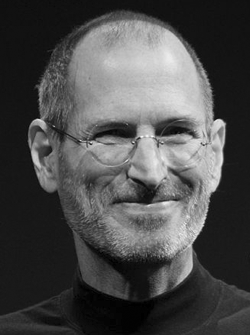 The fascinating post in the Read Write Web outlines a new trend, “Relocalization” or the inevitable “Local 2.0” that’s a backlash against malls, industrial “retail” and online “community.” It predicts a resurgence of “face to face” interaction, and people paying a premium for locally produced products and “townish” community. The fascinating post in the Read Write Web outlines a new trend, “Relocalization” or the inevitable “Local 2.0” that’s a backlash against malls, industrial “retail” and online “community.” It predicts a resurgence of “face to face” interaction, and people paying a premium for locally produced products and “townish” community.
It’s a new synthesis: people increasingly don’t believe in commuting, and many workers are accustomed to working “from home” or in Starbucks or other public coworking spaces. Local 2.0 carries a strong green, anti-carbon tinge as well. And it’s not at all incompatible with periodic jetsetting, everything can interoperate. Definitely worth watching!
 Here’s a useful financial services social business example from Forbes. It details how a Midwest financial services firm grew at competitors’ expense by using LinkedIn, Twitter & legacy communications. Here’s a useful financial services social business example from Forbes. It details how a Midwest financial services firm grew at competitors’ expense by using LinkedIn, Twitter & legacy communications.
Notice that Jefferson, an investments firm, engaged its channel (financial advisors), using LinkedIn, YouTube, Twitter and legacy marcom. Their momentum enabled them to maintain their pricing while competitors felt compelled to lower theirs.
Another powerful lesson is, during “downturns,” don’t follow the herd and cut sales and marketing investments, especially when you can use social business to magnify impact as Jefferson did. Well done! #li
 In case you missed it, this seminal post from the New York Times shows a startling example of “big data” hitting retail. Data collection and mining have enabled Target, for example, to predict what degree of pregancy young mothers are in—based on the kind of things they buy. In case you missed it, this seminal post from the New York Times shows a startling example of “big data” hitting retail. Data collection and mining have enabled Target, for example, to predict what degree of pregancy young mothers are in—based on the kind of things they buy.
Although Valley visionaries and enterprise data engineers have been talking about “big data” for years, this post brings it down to the personal retail level. Due to the growing appreciation of social data and behavior, data scientists and marketers now have the glue to use data to increase relevance to customers and clients.
In this post’s main example, data engineers analyzed purchase behavior of pregnant mothers, sifting through voluminous retail data, and they found plenty of patterns that indicated that women were pregnant, down to the trimester! Obviously, enterprises have a large responsibility to use data in ways that won’t violate trust, and many will make mistakes in their efforts to pump up quarterly numbers.Put another way, buying transactions are *very* social, so retailers, whether bricks and mortar or ecommerce, will unleash tremendous intelligence in […]
Steve Jobs Tribute: Behind the Fierce Competitor and Exacting Boss, the ardent desire to serve connected the creator, the visionary and the executive.
 Much has been written about Steve Jobs the creator, the technology visionary and the enterprise leader, but none of these personas entirely get to his essence. Steve Jobs was all these things, par excellence, but what deeply touched and inspired Apple’s customers and what made Steve bearable as a boss was an unconscious yet poignant feeling that he was there to serve people. He flew the flag of The Rest of Us. Unswervingly. Vehemently. Much has been written about Steve Jobs the creator, the technology visionary and the enterprise leader, but none of these personas entirely get to his essence. Steve Jobs was all these things, par excellence, but what deeply touched and inspired Apple’s customers and what made Steve bearable as a boss was an unconscious yet poignant feeling that he was there to serve people. He flew the flag of The Rest of Us. Unswervingly. Vehemently.
Without this higher calling, Steve would have been merely a successful tyrant. However, Steve’s commitment compelled thousands of brilliant and highly intelligent people to work for him and millions of customers to feel that Apple stood for something rare. Beige boxes and senseless software are optimized for profit, but Steve loathed mediocrity and its inherent compromises because they didn’t serve people, they acted at the expense of people. The desire to serve drove Steve Jobs, the creator, the leader and the innovator. Steve would […]
Understanding Web 3.0 as Data: Reid Hoffman, Founder LinkedIn summarizes business opportunities and privacy threats of the emerging sea of social data as well as outlining Web 3.0 key concepts and importance.
 In addition to being the founder of LinkedIn, Reid Hoffman is a Valley insider with rich insight into technology trends, markets and building companies. His main message in this talk at South by Southwest 2011 was that the future was bearing down on us, and he prophesied that it would “arrive sooner and be stranger than we think.” In addition to being the founder of LinkedIn, Reid Hoffman is a Valley insider with rich insight into technology trends, markets and building companies. His main message in this talk at South by Southwest 2011 was that the future was bearing down on us, and he prophesied that it would “arrive sooner and be stranger than we think.”
He painted the context for his theme, “Web 3.0 as data,” with a simple timeline: […]
 Giving as Smart Business: Blake Mycoskie, Founder TOMS Shoes is a fantastic story and a smart business idea. Blake Mycoskie is a gifted storyteller in his own right, and, in this South by Southwest 2011 keynote, he entertained the audience with the story of TOMS Shoes while imparting a simple but profound principle of 21st century business: discovering the meaning and potential of giving. Here are the highlights of TOMS story, which will help you appreciate the context of the blockbuster business idea. Giving as Smart Business: Blake Mycoskie, Founder TOMS Shoes is a fantastic story and a smart business idea. Blake Mycoskie is a gifted storyteller in his own right, and, in this South by Southwest 2011 keynote, he entertained the audience with the story of TOMS Shoes while imparting a simple but profound principle of 21st century business: discovering the meaning and potential of giving. Here are the highlights of TOMS story, which will help you appreciate the context of the blockbuster business idea.
[…]
 The Future of Location: Josh Williams, CEO Gowalla is a glimpse into his crystal ball, given at SxSW 2011. Josh Williams shared his insights about geosocial at this South by Southwest 2011 session as well as his thoughts about how to approach it to serve customers better. Williams was passionate about orienting geosocial functions around storytelling and travel, which he illustrated by describing Gowalla’s approach to adding value. The Future of Location: Josh Williams, CEO Gowalla is a glimpse into his crystal ball, given at SxSW 2011. Josh Williams shared his insights about geosocial at this South by Southwest 2011 session as well as his thoughts about how to approach it to serve customers better. Williams was passionate about orienting geosocial functions around storytelling and travel, which he illustrated by describing Gowalla’s approach to adding value.
[…]
 The Maple Leaf Digital Lounge has selected the Social Network Roadmap(SM) to build the social presence behind its launch, and CSRA has been working with their team for a few weeks. The Maple Leaf Digital Lounge (“MLDLCA”) is a virtual ecosystem that promotes discovery and collaboration among Canadian digital startups, foreign and Canadian investors and other enablers. Their mission is to facilitate cross-border high tech deals. “The Lounge” has two incarnations: several online venues combined with periodic physical events. Their launch event will happen on March 12 at the South by Southwest Interactive (“SxSW”) conference. Read on for my insights from working with them so far. The Maple Leaf Digital Lounge has selected the Social Network Roadmap(SM) to build the social presence behind its launch, and CSRA has been working with their team for a few weeks. The Maple Leaf Digital Lounge (“MLDLCA”) is a virtual ecosystem that promotes discovery and collaboration among Canadian digital startups, foreign and Canadian investors and other enablers. Their mission is to facilitate cross-border high tech deals. “The Lounge” has two incarnations: several online venues combined with periodic physical events. Their launch event will happen on March 12 at the South by Southwest Interactive (“SxSW”) conference. Read on for my insights from working with them so far.
Also see the case study in video and presentation formats, which illustrates the social business model, Digivents. Note, the case study uses the MLDLCA’s new name, North of 41.
[…]
Regina Herzlinger Keynotes Chicago Healthcare Executives Forum 35th Anniversary
Five-Point Prescription for U.S. Health Care—Involving Patients
 CHEF Chicago’s hospital executives listened raptly to Dr. Regina Herzlinger‘s impassioned message for transforming U.S. health care at their 35th anniversary celebration this month at the J.W. Marriott in Chicago. Dr. Herzlinger is respected and renowned for her message, so there were few surprises. The most distinctive element of her point of view is her strategy for taking a retail-led approach to transforming health care. She is very market- and consumer-focused, which is refreshing because it relies on the market and customers at least as much as the government. “Who Killed Health Care?” is her latest book, and she is a regular advisor to federal and state government officials. CHEF Chicago’s hospital executives listened raptly to Dr. Regina Herzlinger‘s impassioned message for transforming U.S. health care at their 35th anniversary celebration this month at the J.W. Marriott in Chicago. Dr. Herzlinger is respected and renowned for her message, so there were few surprises. The most distinctive element of her point of view is her strategy for taking a retail-led approach to transforming health care. She is very market- and consumer-focused, which is refreshing because it relies on the market and customers at least as much as the government. “Who Killed Health Care?” is her latest book, and she is a regular advisor to federal and state government officials.
[…]
 Comparing Enterprise Social Media Consultants and Providers offers tools and processes to compare various types of social business, social media and social networking consultants. This came up this evening, when I responded to a question in one of my LinkedIn executive groups in which another member asked whether social media consulting was a “real business” for which market demand was real. I always appreciate these questions when they reflect a sincere desire to get a feeling for an emerging market space. Here is how I responded, plus additional details. Comparing Enterprise Social Media Consultants and Providers offers tools and processes to compare various types of social business, social media and social networking consultants. This came up this evening, when I responded to a question in one of my LinkedIn executive groups in which another member asked whether social media consulting was a “real business” for which market demand was real. I always appreciate these questions when they reflect a sincere desire to get a feeling for an emerging market space. Here is how I responded, plus additional details.
A Market for Social Media Services?
Depending on how one defines “social media,” it is already a multimillion dollar consulting and services industry. Most of the players have a marketing approach in which they help their clients to create content and interact with people in major platforms such as Facebook, Twitter, YouTube, LinkedIn, MySpace, blogs and specialized social networks. Most firms focus on consumer-facing (“B2C”) scenarios because the market for business to business use of social technologies significantly lags consumer uses. The three main types of social media services providers are:
[…]
|
|
 The fascinating post in the Read Write Web outlines a new trend, “Relocalization” or the inevitable “Local 2.0” that’s a backlash against malls, industrial “retail” and online “community.” It predicts a resurgence of “face to face” interaction, and people paying a premium for locally produced products and “townish” community.
The fascinating post in the Read Write Web outlines a new trend, “Relocalization” or the inevitable “Local 2.0” that’s a backlash against malls, industrial “retail” and online “community.” It predicts a resurgence of “face to face” interaction, and people paying a premium for locally produced products and “townish” community.
 Much has been written about Steve Jobs the creator, the technology visionary and the enterprise leader, but none of these personas entirely get to his essence. Steve Jobs was all these things, par excellence, but what deeply touched and inspired Apple’s customers and what made Steve bearable as a boss was an unconscious yet poignant feeling that he was there to serve people. He flew the flag of The Rest of Us. Unswervingly. Vehemently.
Much has been written about Steve Jobs the creator, the technology visionary and the enterprise leader, but none of these personas entirely get to his essence. Steve Jobs was all these things, par excellence, but what deeply touched and inspired Apple’s customers and what made Steve bearable as a boss was an unconscious yet poignant feeling that he was there to serve people. He flew the flag of The Rest of Us. Unswervingly. Vehemently. In addition to being the founder of LinkedIn, Reid Hoffman is a Valley insider with rich insight into technology trends, markets and building companies. His main message in this talk at South by Southwest 2011 was that the future was bearing down on us, and he prophesied that it would “arrive sooner and be stranger than we think.”
In addition to being the founder of LinkedIn, Reid Hoffman is a Valley insider with rich insight into technology trends, markets and building companies. His main message in this talk at South by Southwest 2011 was that the future was bearing down on us, and he prophesied that it would “arrive sooner and be stranger than we think.” Giving as Smart Business: Blake Mycoskie, Founder TOMS Shoes is a fantastic story and a smart business idea. Blake Mycoskie is a gifted storyteller in his own right, and, in this South by Southwest 2011 keynote, he entertained the audience with the story of TOMS Shoes while imparting a simple but profound principle of 21st century business: discovering the meaning and potential of giving. Here are the highlights of TOMS story, which will help you appreciate the context of the blockbuster business idea.
Giving as Smart Business: Blake Mycoskie, Founder TOMS Shoes is a fantastic story and a smart business idea. Blake Mycoskie is a gifted storyteller in his own right, and, in this South by Southwest 2011 keynote, he entertained the audience with the story of TOMS Shoes while imparting a simple but profound principle of 21st century business: discovering the meaning and potential of giving. Here are the highlights of TOMS story, which will help you appreciate the context of the blockbuster business idea. The Future of Location: Josh Williams, CEO Gowalla is a glimpse into his crystal ball, given at SxSW 2011. Josh Williams shared his insights about geosocial at this South by Southwest 2011 session as well as his thoughts about how to approach it to serve customers better. Williams was passionate about orienting geosocial functions around storytelling and travel, which he illustrated by describing Gowalla’s approach to adding value.
The Future of Location: Josh Williams, CEO Gowalla is a glimpse into his crystal ball, given at SxSW 2011. Josh Williams shared his insights about geosocial at this South by Southwest 2011 session as well as his thoughts about how to approach it to serve customers better. Williams was passionate about orienting geosocial functions around storytelling and travel, which he illustrated by describing Gowalla’s approach to adding value. The Maple Leaf Digital Lounge has selected the Social Network Roadmap(SM) to build the social presence behind its launch, and CSRA has been working with their team for a few weeks. The Maple Leaf Digital Lounge (“MLDLCA”) is a virtual ecosystem that promotes discovery and collaboration among Canadian digital startups, foreign and Canadian investors and other enablers. Their mission is to facilitate cross-border high tech deals. “The Lounge” has two incarnations: several online venues combined with periodic physical events. Their launch event will happen on March 12 at the South by Southwest Interactive (“SxSW”) conference. Read on for my insights from working with them so far.
The Maple Leaf Digital Lounge has selected the Social Network Roadmap(SM) to build the social presence behind its launch, and CSRA has been working with their team for a few weeks. The Maple Leaf Digital Lounge (“MLDLCA”) is a virtual ecosystem that promotes discovery and collaboration among Canadian digital startups, foreign and Canadian investors and other enablers. Their mission is to facilitate cross-border high tech deals. “The Lounge” has two incarnations: several online venues combined with periodic physical events. Their launch event will happen on March 12 at the South by Southwest Interactive (“SxSW”) conference. Read on for my insights from working with them so far. CHEF Chicago’s hospital executives listened raptly to Dr. Regina Herzlinger‘s impassioned message for transforming U.S. health care at their 35th anniversary celebration this month at the J.W. Marriott in Chicago. Dr. Herzlinger is respected and renowned for her message, so there were few surprises. The most distinctive element of her point of view is her strategy for taking a retail-led approach to transforming health care. She is very market- and consumer-focused, which is refreshing because it relies on the market and customers at least as much as the government. “Who Killed Health Care?” is her latest book, and she is a regular advisor to federal and state government officials.
CHEF Chicago’s hospital executives listened raptly to Dr. Regina Herzlinger‘s impassioned message for transforming U.S. health care at their 35th anniversary celebration this month at the J.W. Marriott in Chicago. Dr. Herzlinger is respected and renowned for her message, so there were few surprises. The most distinctive element of her point of view is her strategy for taking a retail-led approach to transforming health care. She is very market- and consumer-focused, which is refreshing because it relies on the market and customers at least as much as the government. “Who Killed Health Care?” is her latest book, and she is a regular advisor to federal and state government officials. Comparing Enterprise Social Media Consultants and Providers offers tools and processes to compare various types of social business, social media and social networking consultants. This came up this evening, when I responded to a question in one of my LinkedIn executive groups in which another member asked whether social media consulting was a “real business” for which market demand was real. I always appreciate these questions when they reflect a sincere desire to get a feeling for an emerging market space. Here is how I responded, plus additional details.
Comparing Enterprise Social Media Consultants and Providers offers tools and processes to compare various types of social business, social media and social networking consultants. This came up this evening, when I responded to a question in one of my LinkedIn executive groups in which another member asked whether social media consulting was a “real business” for which market demand was real. I always appreciate these questions when they reflect a sincere desire to get a feeling for an emerging market space. Here is how I responded, plus additional details.